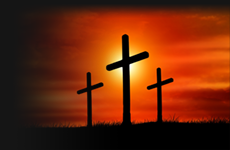
Bible Art

The Good Shepherd
Artist: Marten van Valckenborch
c. 1585
Painting
Marten van Valckenborch or Marten van Valckenborch the Elder[1] (1535 in Leuven – 1612 in Frankfurt), was a Flemish Renaissance painter, principally lknown for his andscapes populated with religious or allegorical themes or depicting agricultural or mining scenes. s.
The Parable of the Good Shepherd, found in John 10:1-18, illustrates Jesus as the shepherd who knows and cares for his sheep, representing his followers. It emphasizes the relationship between Jesus and his believers, highlighting his sacrifice and guidance.
Valckenborch painted this picture of the Parable of the Good Shepherd, c.1580-90. The prevailing color of this fine art print is green and its shape is landscape. Original size is 86 x 123. This art piece is located in Kunsthistorisches Museum, in Vienna, Austria.

The Good Shepherd
Artist: Murillo
c. 1660
Painting
Placed in a nominally classical setting, made intimate by his typically shallow composition, in The Good Shepherd, Murillo has combined his gift for painting children, with an almost Rococo palette, and a limpid, silver sense of light to create images that expressed both spiritual divinity and human vulnerability. The Infant Shepherd's idealised beauty is the antithesis of Murillo's street children, but he maintained a sense of naturalism in the child's casual embrace of the lamb, and its woolly fleece. Also, seizing on the fact that children with domestic animals were a common sight in Seville, Murillo knew the lamb could carry a double meaning: as the Child's pet and as His fate as the Lamb of God, allowing him to illustrate a sacred subject in the context of everyday life, therefore broadening its appeal.
Jesus saud “I am the good shepherd” (John 10:11)
This oil on canvas is in the Collection of the Museo del Prado, Madrid
1 2 3 4 5 6 7 8 9 10 11 12 13 14 15 16 17 18 19 20 21 22 23 24 25 26 27 28 29 30 31 32 33 34 35 36 37 38 39 40 41 42 43 44 45 46 47 48 49 50 51 52 53 54 55 56 57 58 59 60 61 62 63 64 65 66 67 68 69 70 71 72 73 74 75 76 77 78 79 80 81 82 83 84 85 86 87 88 89 90 91 92 93 94 95 96 97 98 99 100 101 102 103 104 105 106 107 108 109 110 111 112 113 114 115 116 117 118 119 120 121 122 123 124 125 126 127 128 129 130 131 132 133 134 135 136 137 138 139 140 141 142 143 144 145 146 147 148 149 150 151 152 153 154 155 156 157 158 159 160 161 162 163 164 165 166 167 168 169 170 171 172 173 174 175 176 177 178 179 180 181 182 183 184 185 186 187 188 189 190 191 192 193 194 195 196 197 198 199 200 201 202 203 204 205 206 207 208 209 210 211 212 213 214 215 216 217 218 219 220 221 222 223 224 225 226 227 228 229 230 231 232 233 234 235 236 237 238 239 240 241 242 243 244 245 246 247 248 249 250 251 252 253 254 255 256 257 258 259 260 261 262 263 264 265 266 267 268 269 270 271 272 273 274 275 276 277 278 279 280 281 282 283 284 285 286 287
